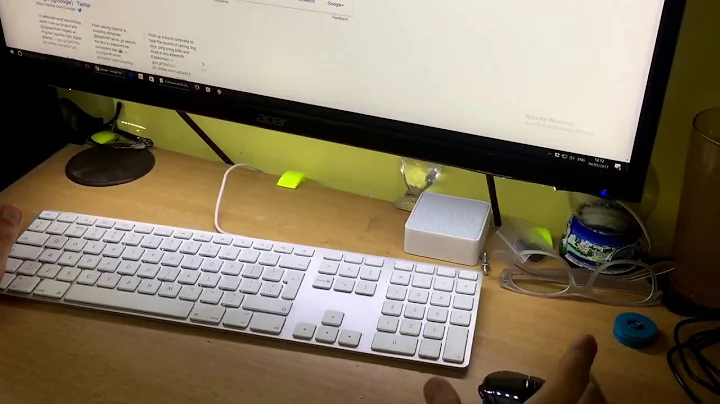Print Screen on Windows 7 with Apple keyboard
Keyboard remapping
Quoting Wikipedia:
A scancode (or scan code) is the data that most computer keyboards send to a computer to report which keys have been pressed. A number, or sequence of numbers, is assigned to each key on the keyboard.
Since Windows 2000, the Scancode Map registry value can be used to remap a key to another or disable it entirely. The scan code mappings are stored in the following registry key:
HKEY_LOCAL_MACHINE\SYSTEM\CurrentControlSet\Control\Keyboard Layout
In the
Keyboard Layoutkey, theScancode Mapvalue must be added. This value is of typeREG_BINARY(little Endian format) and has the data format specified in the following table.
Start offset (in bytes) | Size (bytes) | Data
---------------------------------------------------------------------
0 | 4 | Header: Version Information
4 | 4 | Header: Flags
8 | 4 | Header: Number of Mappings
12 | 4 | Individual Mapping
... | ... | ...
Last 4 bytes | 4 | Null Terminator (0x00000000)
The first and second
DWORDSstore header information and should be set to all zeroes for the current version of the Scan Code Mapper. The thirdDWORDentry holds a count of the total number of mappings that follow, including the null terminating mapping. The minimum count would therefore be 1 (no mappings specified). The individual mappings follow the header. Each mapping is oneDWORDin length and is divided into twoWORDlength fields. EachWORDfield stores the scan code for a key to be mapped.Source: Keyboard and mouse class drivers
Manual registry editing
Open a command prompt as administrator.
-
Type or paste the following command, and press Enter:
reg add "HKLM\SYSTEM\CurrentControlSet\Control\Keyboard Layout" /v "Scancode Map" /t REG_BINARY /d 00000000000000000200000037e0640000000000 /fIn this case there's only one mapping: the F13 key (scancode
0x0064). It is remapped to0xe037, which is the Print Screen key. Log off or restart Windows to apply the changes.
Using SharpKeys
SharpKeys is a utility that manages a Registry key that allows Windows to remap one key to any other key. Included in the application is a list of common keyboard keys and a Type Key feature to automatically recognize most keyboard keys.
Note Latest version requires .NET Framework 4.x in order to work. You can get an older version if you need it to run with .NET Framework 2.0/3.x. A portable version is available too.
Download and run SharpKeys.
Click Add, select Function: F13 (00_64) from the list, and map it to Special: PrtSc (E0_37), then click OK.
Click Write to Registry, then log off or restart Windows to apply the changes.
Further reading
- Scancode
- Keyboard and mouse class drivers
- Command Prompt: frequently asked questions
- Using An Apple Keyboard With Windows 7
Related videos on Youtube
2C-B
Updated on September 18, 2022Comments
-
 2C-B almost 2 years
2C-B almost 2 yearsI am trying to identify the
Print Screenfunctionality with an Apple keyboard (A1243, 109 keys) on Windows 7. I do not want to use the on-screen keyboard as suggested (and chosen as the accepted answer) in this duplicate question.I would like to achieve the functionality with key strokes only. If I need to map keys, I would like to achieve this without additional software. What are my options?
I have tried the following key strokes and they definitely do not work on my system:
F13,F14,F15,command+shift+4,option+F13. -
 2C-B over 10 yearsThanks for the reply. Can this not be achieved without additional software (as requested in OP)? I need to do this in my work environment where I ideally should not install additional software.
2C-B over 10 yearsThanks for the reply. Can this not be achieved without additional software (as requested in OP)? I need to do this in my work environment where I ideally should not install additional software. -
and31415 over 10 years@2C-B I initially thought "additional software" actually meant additional, running-all-the-time software. SharpKeys is available as a portable version too, but you can also manually edit the registry (although it's not as comfy). See my updated answer.




